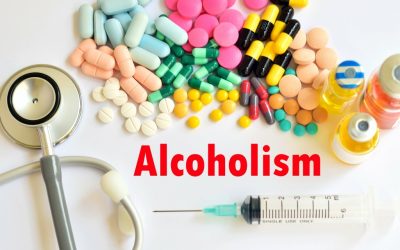By promoting healthy coping strategies and providing access to professional treatment, we can help individuals overcome substance abuse and lead healthier, more fulfilling lives. If you or a loved one needs help for addiction, don’t hesitate to contact La Valley Recovery to begin the journey to recovery. Patients were first asked to describe every strategy they had used in the past __ months to keep themselves from drinking alcohol when they had an urge to drink (urge was defined to them as “wish for, temptation, desire, want, craving, close call, etc.”). The time frame was 6 months at 12-month follow-up, 3 months at 6-month follow-up, to match the drinking periods in the analyses. Open-ended responses are not used in the present study but had the purpose of eliciting free recall before providing the closed-ended questions.
- These memories are often avoided so that we can function in the present without the weight of the past.
- Since there is evidence that participants balance the speed-accuracy trade-off differently 95, the dependent measure of the go/nogo task is the balanced integration score (BIS).
- The emotional effects of alcohol and emotional drinking on our mental health are far-reaching.
- Additionally, the cross-sectional nature of the current study limits causative interpretations.
- Understanding the underlying cause of your need to use alcohol as a coping mechanism requires reflection and insight.
- For example, headaches and migraines are triggered by alcohol rather than being effectively attenuated 170.
What causes addiction?

These focus on developing skills for acutely coping with urges to drink and other situations that pose an immediate high risk for relapse. Therapists provide a menu of both anticipatory and immediate coping skills (cognitive or behavioral) which the client practices during role-plays or while imagining being in the situation. The model for teaching situation-specific skills is that practicing alternative ways to handle immediate risk will allow more rapid and effective responses when in real-world high-risk situations so as to avert relapse. Thus, one approach focuses on lifestyle skills whether or not a relapse trigger is present, and the other focuses on relapse triggers per se (Rohsenow et al., 2005). Following the transition to adulthood, alcohol effects on alcohol as a coping mechanism later depression appear primarily indirect and mediated by coping motives, a pattern that is generally consistent with the Acquired Preparedness model (Settles et al., 2010).
Drinking motives as predictors of consumption during lockdown
Those individuals who validate high coping motives like denial of drinking may experience alcohol as a more powerful reinforcer after periods of stress. Many individuals with anxiety may turn to alcohol as a way to cope with their symptoms. However, this can quickly develop into a cycle of dependence, as the person begins to rely on alcohol as a primary coping mechanism. If AUD runs in your family, you pose a higher risk of developing AUD yourself than someone that does not have a genetic history of AUD.

Data Analytic Plan
- Whether or not substance abuse and/or addiction run in your family, all people experience increased tolerance for alcohol the more and longer that they drink.
- It was unexpected that one type of alternative activity, substituting food or a non-alcoholic drink, was not related to success in this study.
- Alcohol is consumed to reduce tension caused by a highly stressful work environment 110, or from a partner relationship 111.
- In particular, men who developed a ‘male depression’ reported self-managing this state with alcohol 116.
- However, a small percentage of individuals make the transition from controlled alcohol use and instrumentalization to abuse.
That night, I also admitted to myself that I was struggling with an eating disorder. But despite the consequences, I didn’t confront the deeper issues; instead, I continued to numb them with alcohol. In describing significant indirect effects, we focused on cross-variable pathways for depression and alcohol use. However, it is worth noting that extended pathways from early depressive symptoms to later MDD diagnoses via intermediary depressive symptoms were significant, as were paths from early alcohol use to later AUD diagnoses via intermediary alcohol use. We also focus on the longest indirect pathways that were statistically significant, as all shorter indirect pathways contained within the longer paths were also significant.
- In a brain that gives rise to very pronounced personality traits, psychiatric disorders or that is under allostatic load 203, the neuropharmacological effects of alcohol can be largely altered and even be opposite to those in healthy brains 21, 86, 201, 202 (Table 1).
- After completion of the behavioral tasks and the intervention, participants are asked to take part at an ad-libitum taste test as a covert measure for alcohol consumption.
- Unfortunately, the demarcation of this period versus adulthood is not very well defined.
- “It has been suggested that one reason coping motives may lead to problem drinking is that individuals who drink to cope may do so because they do not have other more adaptive ways to cope in their repertoire (Cooper et al., 1995).” – Source.
Alcohol consumption

In the NESARC wave 1, the prevalence of SM with alcohol only for different ADs ranged from 3.0% for panic disorder without agoraphobia to 14.9% for social phobia (Table 1) (Robinson et al., 2009a). The prevalence of SM with drugs (with or without alcohol) ranged from 0.7% for panic disorder without agoraphobia to 7.0% for GAD (Leeies et al., 2010; Robinson et al., 2009a). Drug rehabilitation When considering the prevalence of any SM (alcohol and/or drugs), results from the NCS provide a prevalence range from 7.9% for social phobia speaking subtype to 35.6% for GAD (Bolton et al., 2006). The prevalence of SM with alcohol only for any AD ranged from 10.0 to 20.8% using data from the NESARC waves 1 and 2 (Menary et al., 2011; Robinson et al., 2009a); and using the NCS data, the prevalence of any SM (alcohol and/or drugs) for any AD was 21.9% (Bolton et al., 2006). During times of stress, it’s important to find healthy outlets to process pent-up emotions and cope.





Deixe um comentário